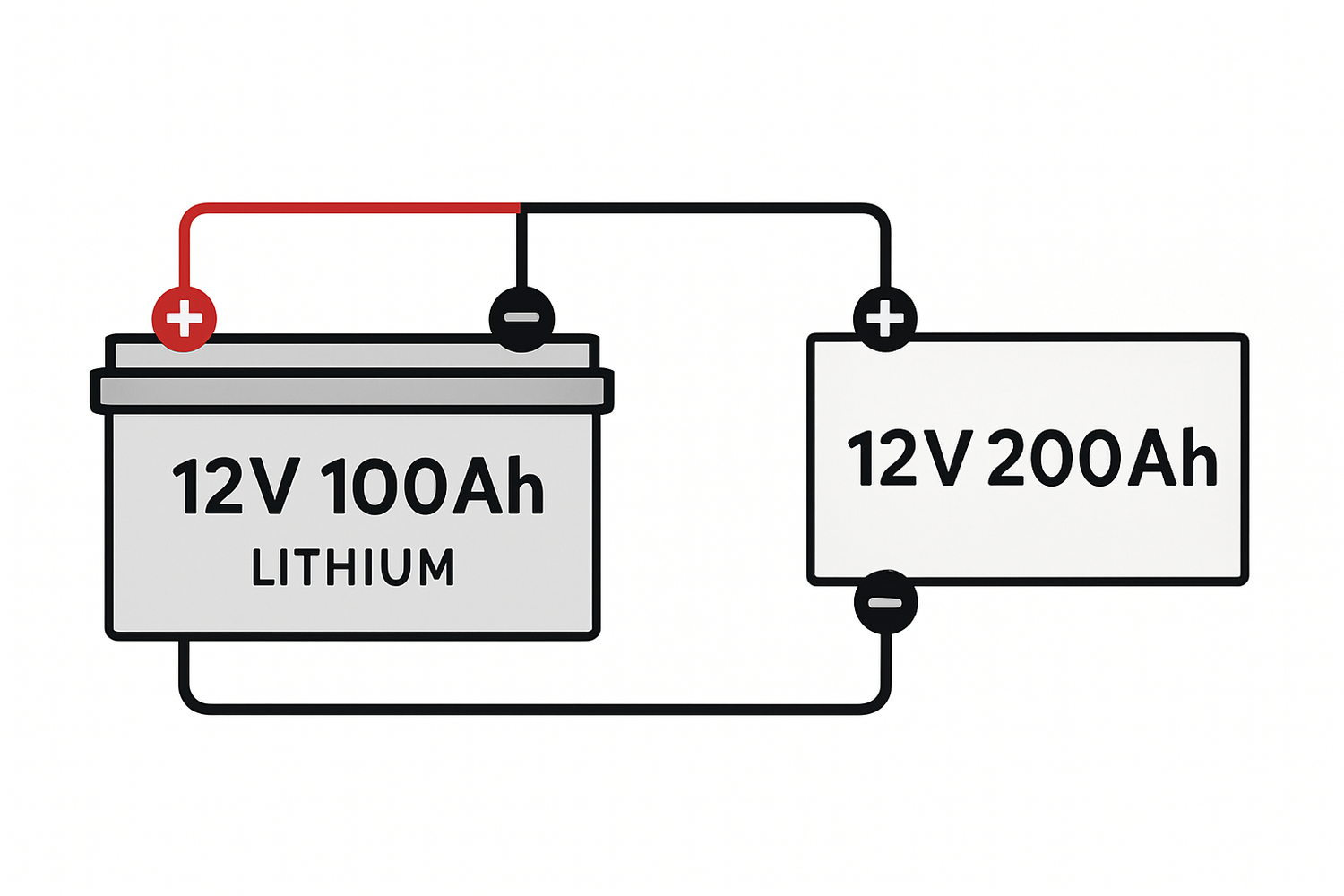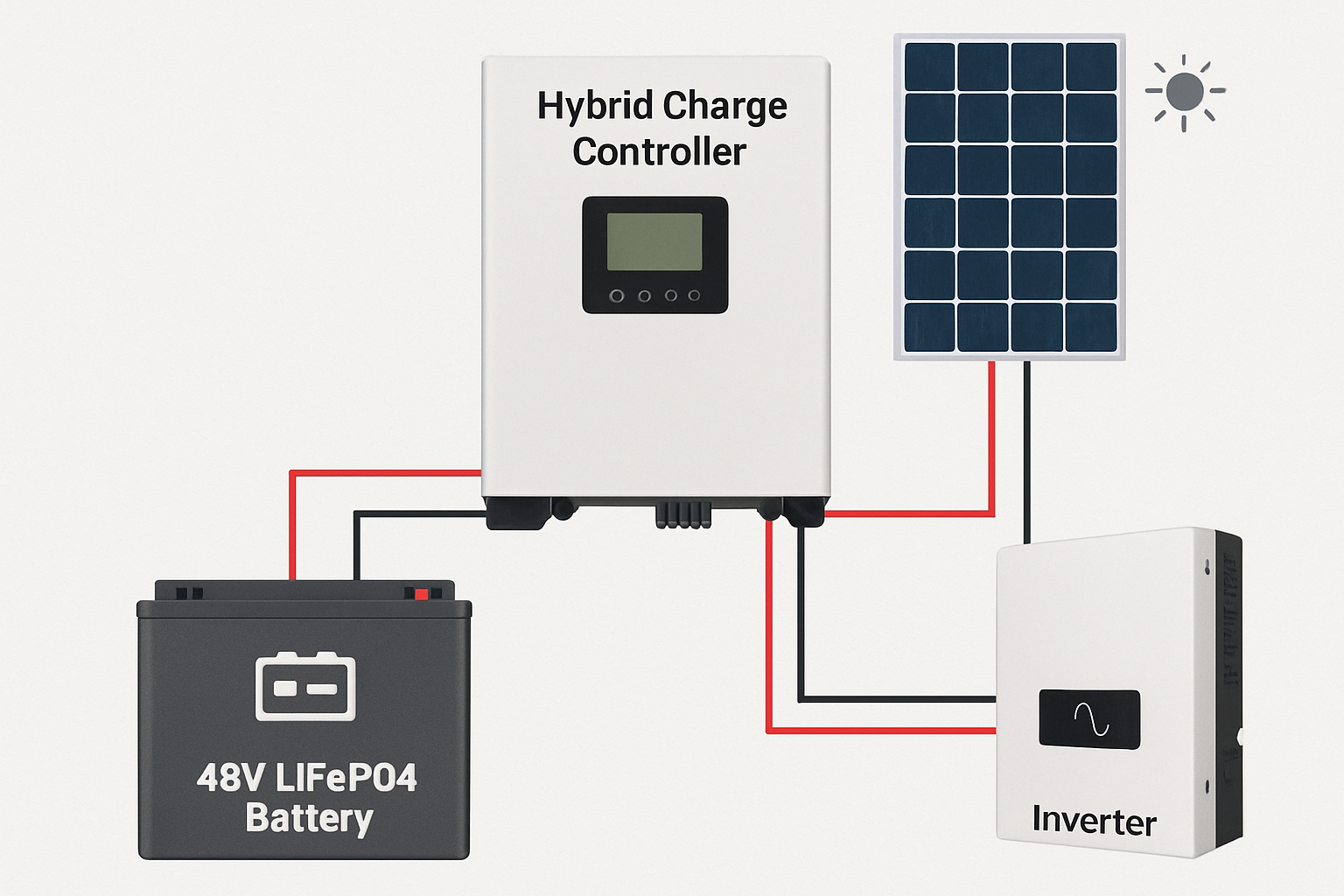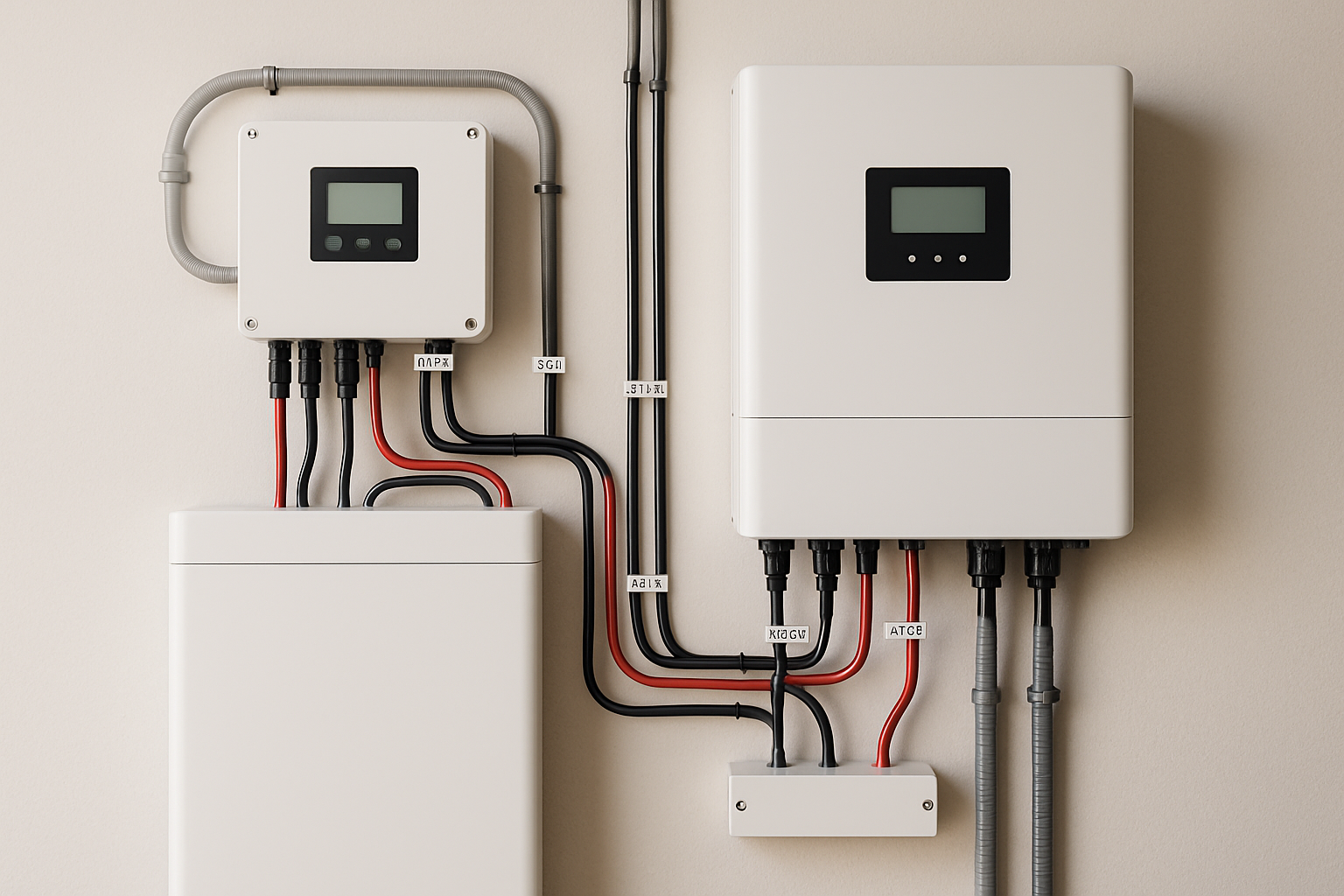Properly wiring your 12V 100Ah lithium batteries is fundamental to the performance and safety of your solar energy system. The way you connect multiple batteries determines the overall voltage and capacity of your battery bank. This directly impacts how it interacts with your hybrid charge controller and powers your devices. Two primary methods exist: series and parallel connections. Choosing the correct one is not just a technical detail; it's the key to unlocking your system's full potential.
Understanding the Building Blocks: Voltage and Capacity
Before connecting any wires, it's helpful to grasp two core concepts: voltage and amp-hours. Think of these as the fundamental properties of your energy storage.
What is Voltage (V)?
Voltage is the electrical pressure or force that pushes electricity through a circuit. A higher voltage allows for the efficient transfer of power over longer distances with thinner wires. Most small-scale solar applications use 12V, 24V, or 48V systems.
What is Amp-Hour (Ah) Capacity?
Amp-hour capacity represents the amount of charge a battery can deliver over time. A 12V 100Ah lithium battery can, in theory, supply 100 amps for one hour or 10 amps for 10 hours. It's a measure of your energy 'fuel tank'. As noted in a report by IRENA on Electrification with renewables, the amount of energy that must be stored is determined by the total energy required to operate the connected load.
Parallel Wiring: Increasing Energy Storage Capacity
A parallel connection is designed to increase your system's total capacity (Ah) while keeping the voltage the same. This configuration is ideal for applications that require longer runtimes from a 12V system.
How to Create a Parallel Connection
To wire two 12V 100Ah lithium batteries in parallel, you connect the positive terminal of the first battery to the positive terminal of the second. You then do the same for the negative terminals. The output to your hybrid charge controller is taken from the positive terminal of the first battery and the negative terminal of the second.
- Resulting Voltage: 12V
- Resulting Capacity: 200Ah (100Ah + 100Ah)
- Total Energy: 2400Wh (12V x 200Ah)
When to Use a Parallel Configuration
Choose a parallel setup when your energy needs are high, but your system—including your hybrid charge controller and inverter—is designed to run on 12V. This is common in RVs, boats, and small off-grid cabins where you want to power appliances for extended periods without recharging.
Series Wiring: Increasing System Voltage
A series connection increases the total voltage of your battery bank while the capacity (Ah) remains the same. This is essential for building higher-voltage systems like 24V or 48V.
How to Create a Series Connection
To wire two 12V 100Ah batteries in series, you connect the positive terminal of the first battery to the negative terminal of the second. The main positive output is taken from the unused positive terminal of the second battery, and the main negative output is from the unused negative terminal of the first battery.
- Resulting Voltage: 24V (12V + 12V)
- Resulting Capacity: 100Ah
- Total Energy: 2400Wh (24V x 100Ah)
When to Use a Series Configuration
A series configuration is necessary when your hybrid charge controller and inverter are designed for a higher voltage (e.g., 24V or 48V). Higher voltage systems are often more efficient because they reduce current, allowing you to use smaller, less expensive wiring, especially over longer distances. This is a key consideration in larger home battery storage systems.
Comparing Series and Parallel Connections
The choice between series and parallel wiring depends entirely on your system's requirements. Both configurations of two 12V 100Ah batteries yield the same total energy (2400Wh), but they deliver it in different ways. System efficiency is a critical factor; as detailed in our guide on solar storage performance, higher voltage systems can reduce resistive losses in wiring, improving overall performance.
| Feature | Parallel Connection | Series Connection |
|---|---|---|
| Connection Method | Positive to Positive, Negative to Negative | Positive to Negative (Daisy Chain) |
| Resulting Voltage | Stays the same (12V) | Increases (24V) |
| Resulting Capacity | Increases (200Ah) | Stays the same (100Ah) |
| Total Energy | 2400Wh | 2400Wh |
| Primary Use Case | Increasing runtime in a 12V system | Building a 24V or 48V system |
Connecting to Your Hybrid Charge Controller
Your hybrid charge controller is the brain of your solar setup. It must be compatible with the voltage of your battery bank. According to the IEA's Solar Energy Perspectives report, components like inverters and wiring are part of the 'balance of system' and are critical for proper operation.
Match the Voltages
If you wire your batteries in series to create a 24V bank, you must use a hybrid charge controller rated for 24V. Similarly, a 12V parallel bank requires a 12V-compatible controller. Many modern controllers can auto-detect the voltage, but it's always best to verify the settings manually.
Safety and Configuration
Regardless of the wiring method, always install appropriate fuses or circuit breakers between the battery bank and the charge controller for overcurrent protection. Within the controller's settings, ensure you select the correct battery type (Lithium/LiFePO4) and configure the proper charging parameters to maximize battery lifespan and ensure safe operation.
Finalizing Your Battery Bank Configuration
The decision to wire your 12V 100Ah lithium batteries in series or parallel is a foundational step in designing a reliable energy storage solution. A parallel connection doubles your runtime for 12V systems. A series connection builds the higher voltage needed for larger, more efficient 24V or 48V systems. By understanding your energy goals and the requirements of your hybrid charge controller, you can create a powerful and efficient battery bank tailored to your needs.
Disclaimer: This information is for educational purposes only. Working with electrical systems can be dangerous. We recommend consulting with a qualified professional for installation and advice specific to your system. This content does not constitute investment or legal advice.
Frequently Asked Questions
Can I mix batteries of different capacities, ages, or chemistries?
It is strongly advised not to mix batteries. For both series and parallel connections, you should always use identical batteries—same model, capacity, voltage, and approximate age. Mismatched batteries can lead to imbalanced charging and discharging, which reduces performance and can create a serious safety hazard.
What is a series-parallel connection?
For larger systems, you can combine both methods. For example, you could wire two pairs of 12V 100Ah batteries in series to create two separate 24V 100Ah banks. Then, you could connect those two banks in parallel to create a final system that is 24V and 200Ah. This advanced configuration requires careful planning and a robust Battery Management System (BMS).
Why is a Battery Management System (BMS) important?
A BMS is crucial for any lithium battery bank, especially one with multiple cells. It protects the batteries from overcharging, over-discharging, extreme temperatures, and short circuits. It also performs cell balancing, ensuring all cells in the pack are at a similar state of charge, which significantly extends the life and maintains the performance of the entire battery bank.





Leave a comment
All comments are moderated before being published.
This site is protected by hCaptcha and the hCaptcha Privacy Policy and Terms of Service apply.